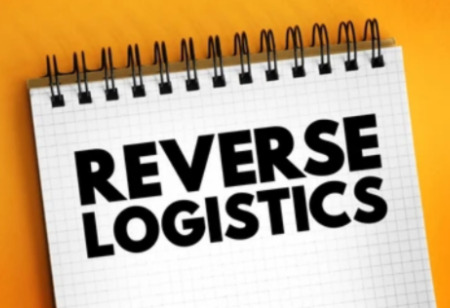
The Art of Returns Management, Why QC RVP is Critical for Happy Customers, Retailers


Dipanjan Banerjee is the Chief Business Officer and is responsible for driving business for all three verticals - EXS, EDS & EFS. He brings to the position a successful track record of 15+ years of Sales and Business Development that include expertise in Sales Management, Sales and Growth Strategies, Customer Relationship Management, and developing customized logistics solutions for the logistics industry, serving the E-Commerce and Retail industries.
With proven skills of handling large teams and building teams from scratch, he specializes in driving business growth through effective planning and execution that has led to significant revenue growth.
Ever wonder how the order of an online customer who placed for ‘return’ gets picked up? As simple as it seems, the process is a complicated but a fulfilling one for the customer and the merchant. In shipping, moving products from the warehouse or manufacturer to the customer is known as forward logistics. However, there is another crucial process known as reverse logistics or RVP.
As the name suggests, this process focuses on moving products from a customer back to the merchant facility. Reverse logistics or RVP is an essential service for a customer wanting to make a return, whether due to a damaged product, wrong size, or incorrect address.

The Two Sides Of A Coin: QC RVP And RVP
When an order for Reverse Pickup (RVP) is received, shipping and 3PL companies perform QC Reverse Pick-up and Non-QC Reverse pick-up.
The key difference between the two is that, in QC RVP, the field executive performs a thorough examination of the shipment with different parameters based on an internal manual of the shipping company such as the SATHi App.
The field executive checks the product and updates the status for each parameter on the delivery app.
If the product passes the quality check, the field executive picks it up.
If it fails to meet the quality parameters, the executive informs the customer the reason for not picking it up..jpg)
Don't Let Customer Returns Be Your Nightmare - QC RVP to the Rescue of Online Merchants
From the merchant's perspective, the key features of Quality Check-Enabled Reverse Pickup (QC RVP) play a crucial role in ensuring that the customer returns service is efficient, secure and meets the company's standards. Below are some of the key features of QC RVP.
Timely and flexible pickup: When a customer wants to return a product, it is important to make a timely pickup attempt at the customer's doorstep. This helps in maintaining the customer's trust in the company and ensures that the return process is smooth and hassle-free. Customers may have different schedules and availability for return pickups, so it is important to provide them with flexible pickup options.
For eCommerce merchants, returns are a predictable event, and it is essential to build a streamlined process that ensures customers can complete the process hassle-free.
Proper quality check: The main objective of the QC RVP is to ensure that the returned product is unused with all the labels and physical conditions intact so that it can be put back on the shelf for sale.
Fast and Safe transit: During the transit of a returned product, ensure that the product is safe from any external wear and tear. This helps in preventing any damage to the product and maintains its quality. How fast a shipment travels in the logistic network and reaches back to the merchant is crucial for merchant satisfaction. Fast transit helps in ensuring that the returned product reaches the merchant warehouse as soon as possible and is put up for sale again.
Customer refund: Multiple modes of refund help boost customer experience and increase loyalty towards the brand. After a product is returned and checked, it is important to refund the customer's money. To ensure the authenticity of the return process, merchants can introduce OTP-based return processes. This ensures that only the original buyer can initiate the return process and ensures the refund is credited to the right person.
Real-time updates and helpline support: Notifications in real-time and push messages keep the customer and the merchant abreast with the return status. Customers appreciate real-time notifications regarding their returns. In the hyper-connected world, it is important to address eSeller and customer queries over the phone call and emails. Customers may have queries regarding their return process.
30 Percent of Online Orders Come Back: Why Quality Check in RVP is a Retailer's Secret Weapon
With customers ordering multiple pieces of the same item in different colours and sizes, some get fully or partially returned based on the customer preferences. RVP is an integral component of last-mile delivery and order fulfillment. Without RVP, eCommerce retailers would lose business, and customer satisfaction would decline.
One-third of the items are returned
As per studies, 30 percent of items purchased online end up getting returned, compared to less than 10 percent of in-store purchases. The ratio goes up further in case of COD (Cash On Delivery) orders. Recent trends show that most customers order multiple pieces of the same article with different colours and sizes, and most of them get fully or partially returned based on customer likes/dislikes/fits.
Important for E-Commerce Merchants
For eCommerce merchants, returns are a predictable event, and it is important to build a streamlined process that ensures that the customers can complete the process hassle-free. This helps them build loyalty towards the brand even if the product did not work out for them.
Order Fulfillment and Customer Satisfaction
Reverse pickup is an integral component of last-mile delivery and order fulfillment. Without reverse pickup, eCommerce retailers would lose business, and customers' satisfaction would go for a toss. This will help build loyalty towards your brand, even if the product didn't work out for the customer.
QC RVP - The Magic Spell for Customer and Merchant Satisfaction

Quality Check in Reverse Logistics is a crucial aspect of the shipping and courier industry. With the rise of eCommerce, returns have become a common occurrence, and it is essential to have a streamlined process in place. Shipping companies need to ensure the timely pickup of orders that are placed for return.
For eCommerce merchants, returns are a predictable event, and it is essential to build a streamlined process that ensures customers can complete the process hassle-free.